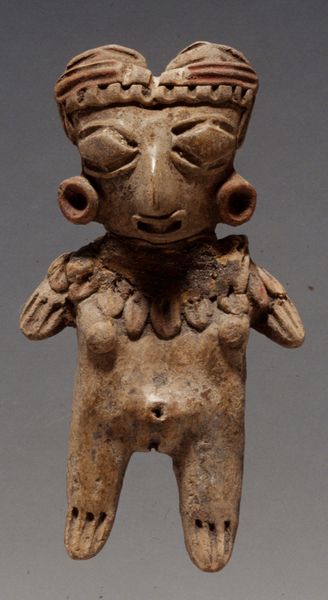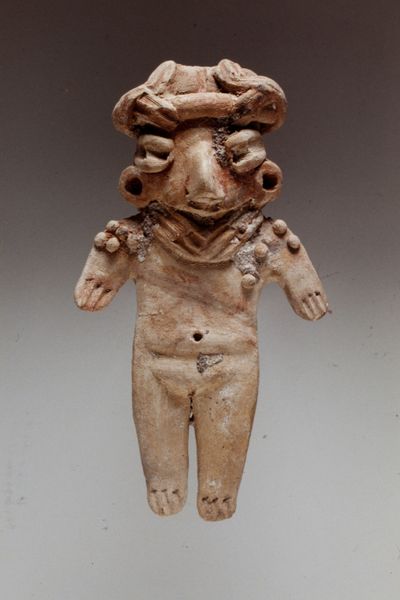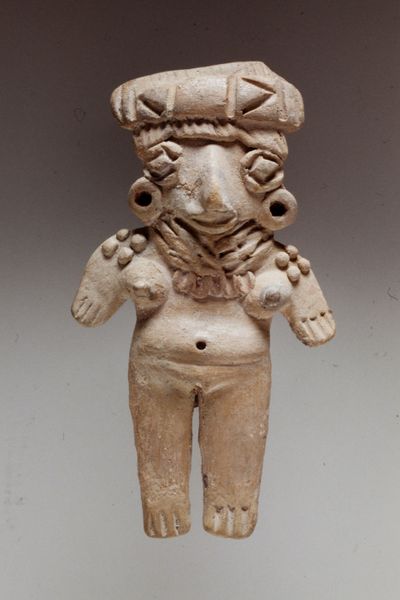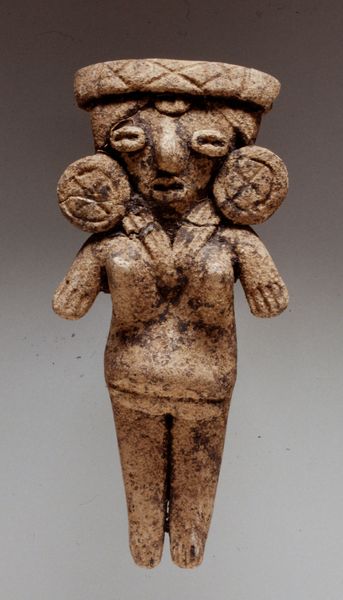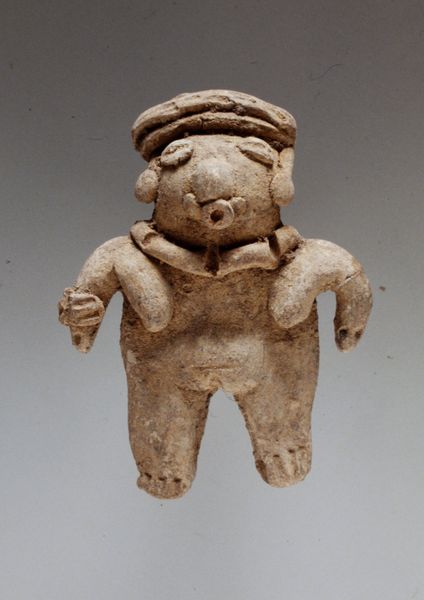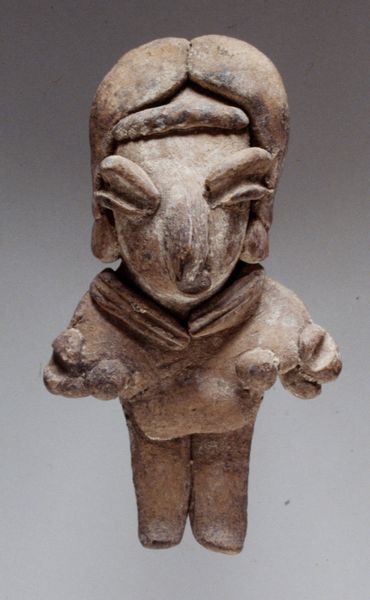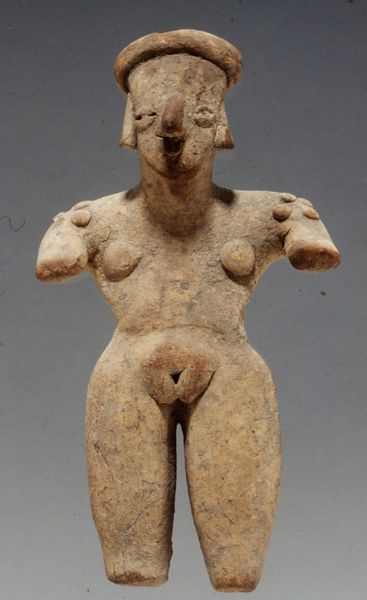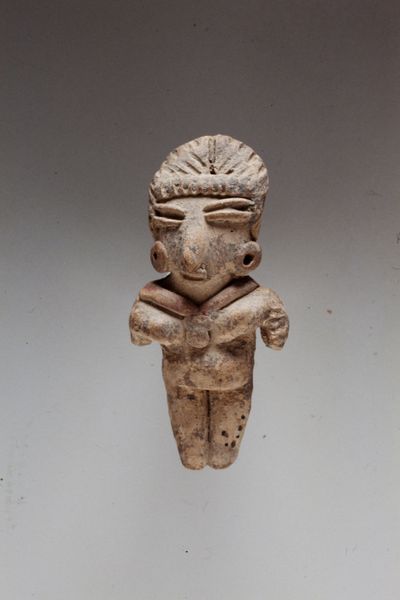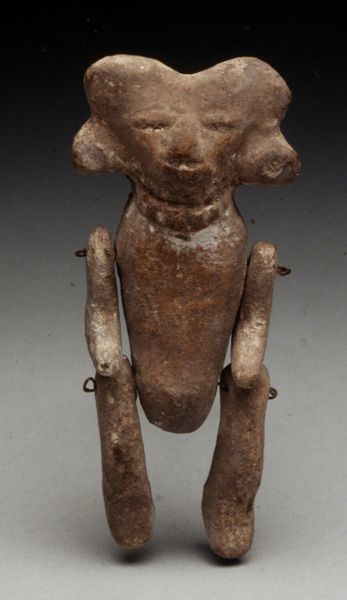
ceramic, earthenware, sculpture
#
ceramic
#
figuration
#
form
#
earthenware
#
sculpture
#
indigenous-americas
Dimensions: 3 x 1 5/8 in. (7.6 x 4.13 cm)
Copyright: Public Domain
Editor: Here we have "Standing Figure," a ceramic sculpture from the Chupícuaro culture, dating roughly to 250-300 CE. The figure is small and seems so grounded, solid. How might we interpret this work? Curator: Its stillness carries weight, doesn’t it? Consider how seemingly simple forms accumulate meaning over centuries. Earthenware links this figure materially to the earth itself, speaking to cycles of life. And what about that striking headdress or hairstyle? Do those patterned shapes suggest something to you? Editor: Maybe status or ritual adornment? It does feel very intentional, those raised circular forms. Curator: Precisely! Headwear is powerful symbol. Think, too, of the figure's simplified, almost childlike features, the wide eyes and subtly open mouth. Indigenous American art often uses such stylization. What emotions are evoked by the form? Is there an openness, vulnerability even, in its presentation? Editor: Definitely a sense of directness, an openness. Almost like an invitation. And being small-scale, ceramic means it was probably very tactile at some point. Curator: The connection is physical and emotional, crossing generations. The survival of these materials speaks to its significance. Such figures acted as cultural touchstones. Does that impact your reading of it? Editor: Absolutely. The idea of it being held, handled, cherished... it shifts my perspective. Thanks, I'm looking at it totally differently now! Curator: It’s amazing how even fragments can carry so much symbolic resonance. Every viewing unearths new layers, and every reading echoes its timeless message.
Comments
No comments
Be the first to comment and join the conversation on the ultimate creative platform.
